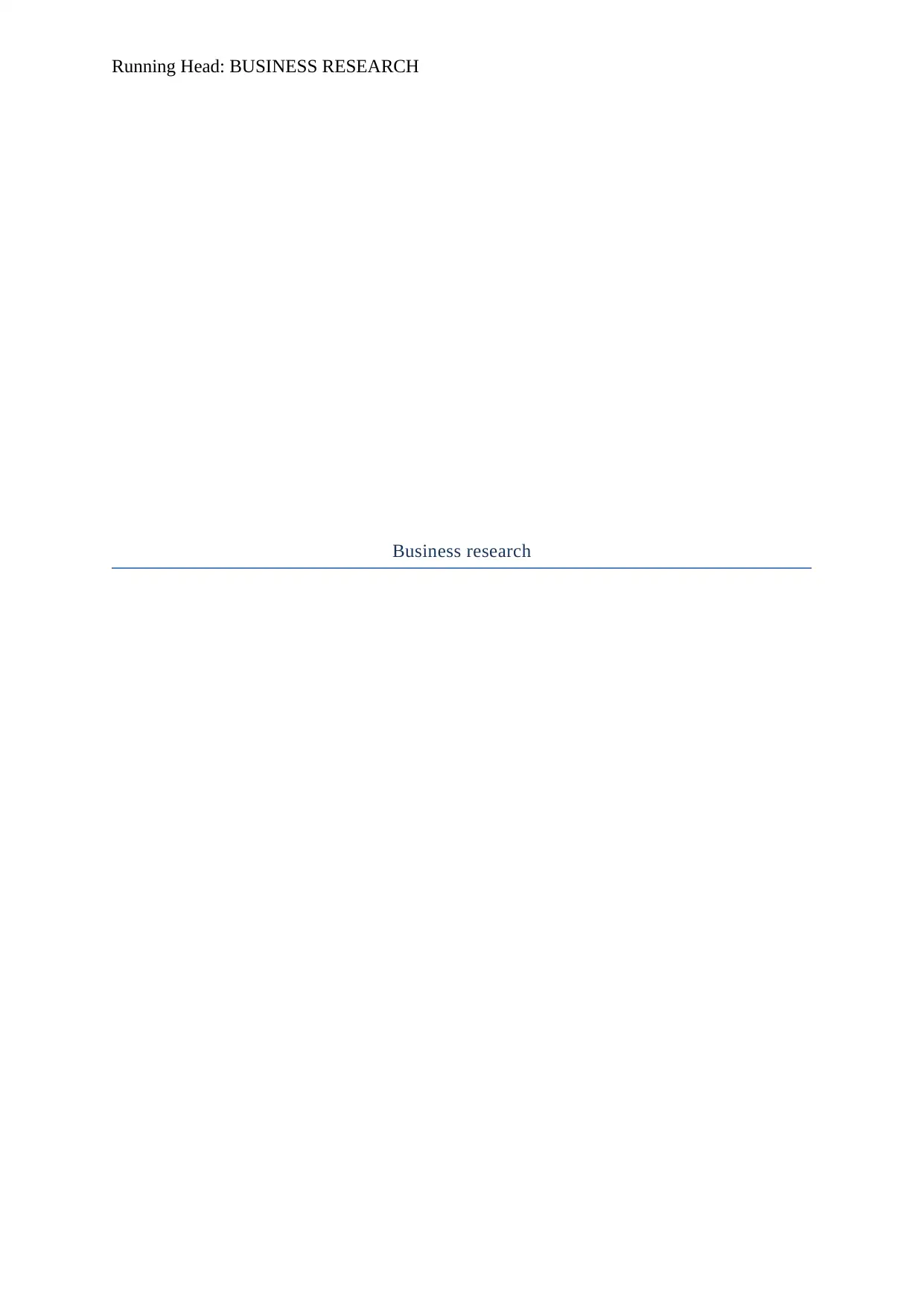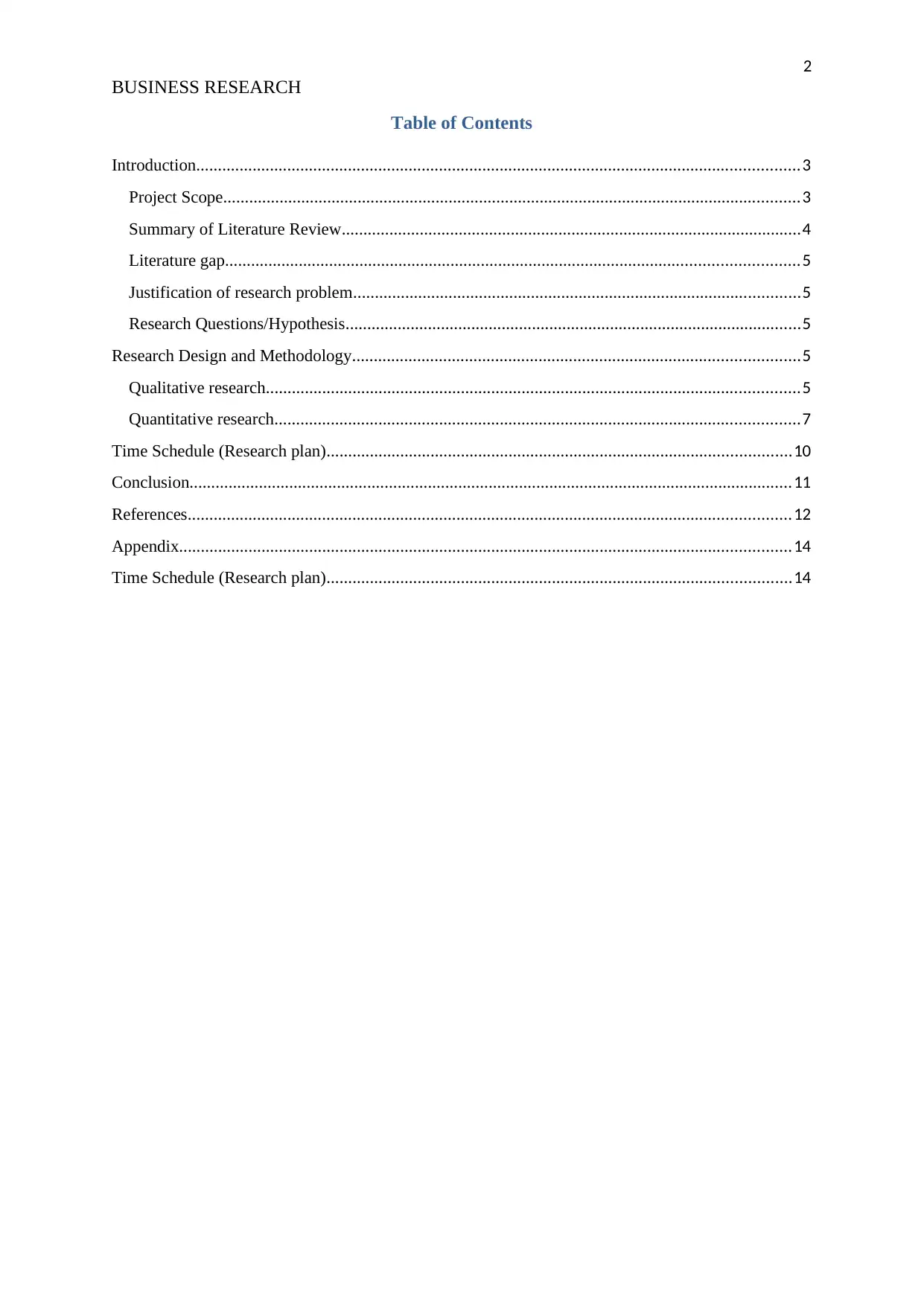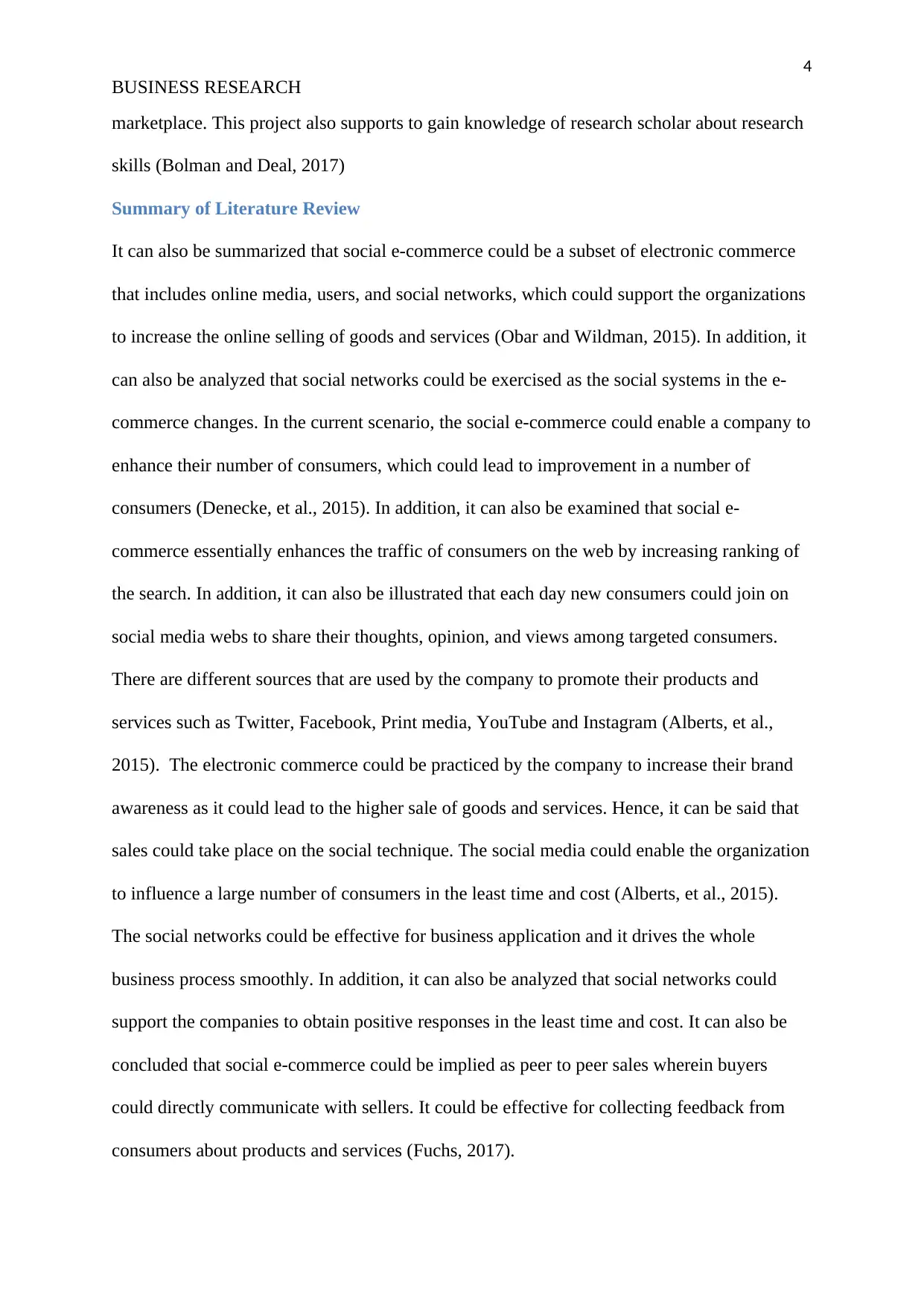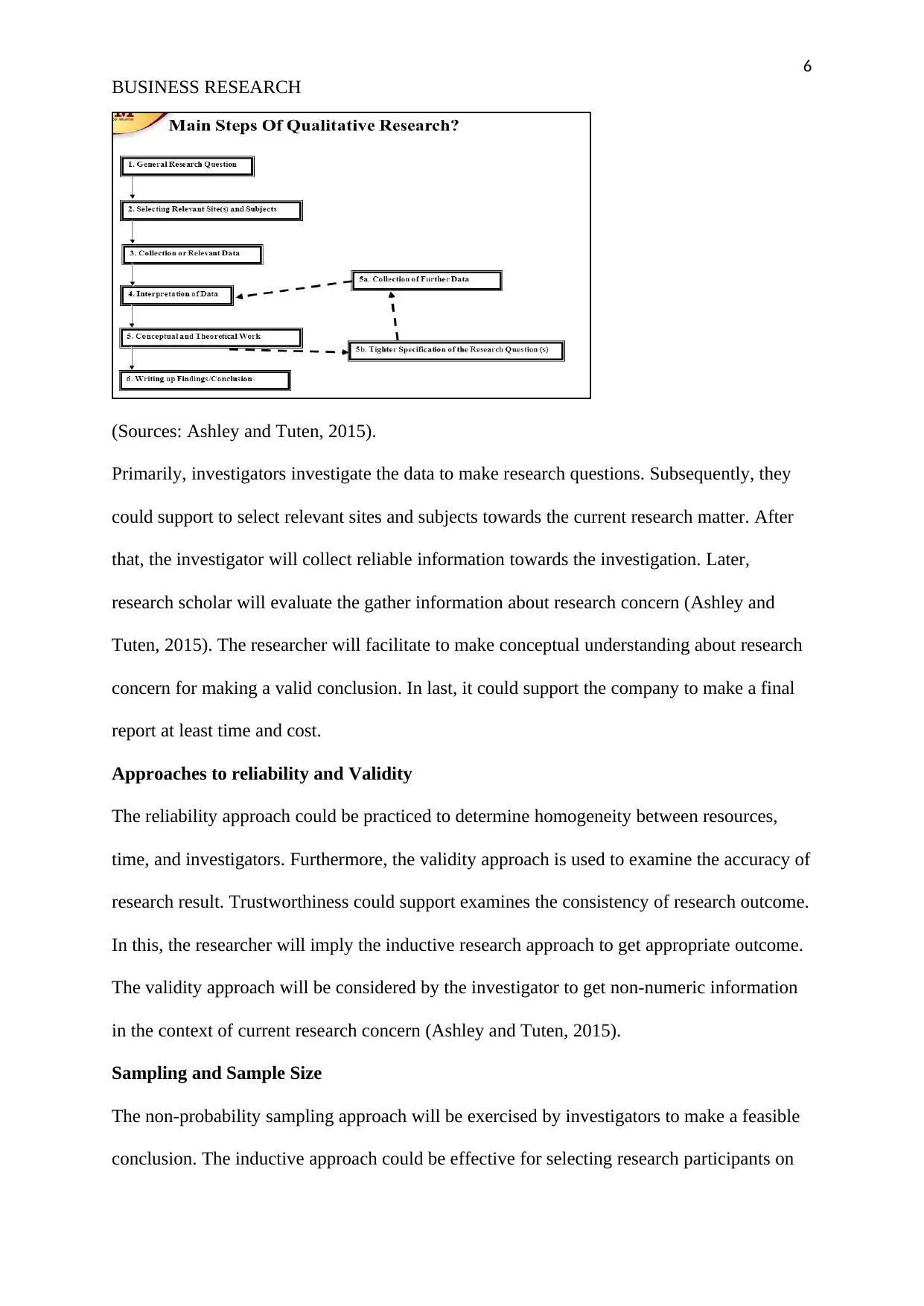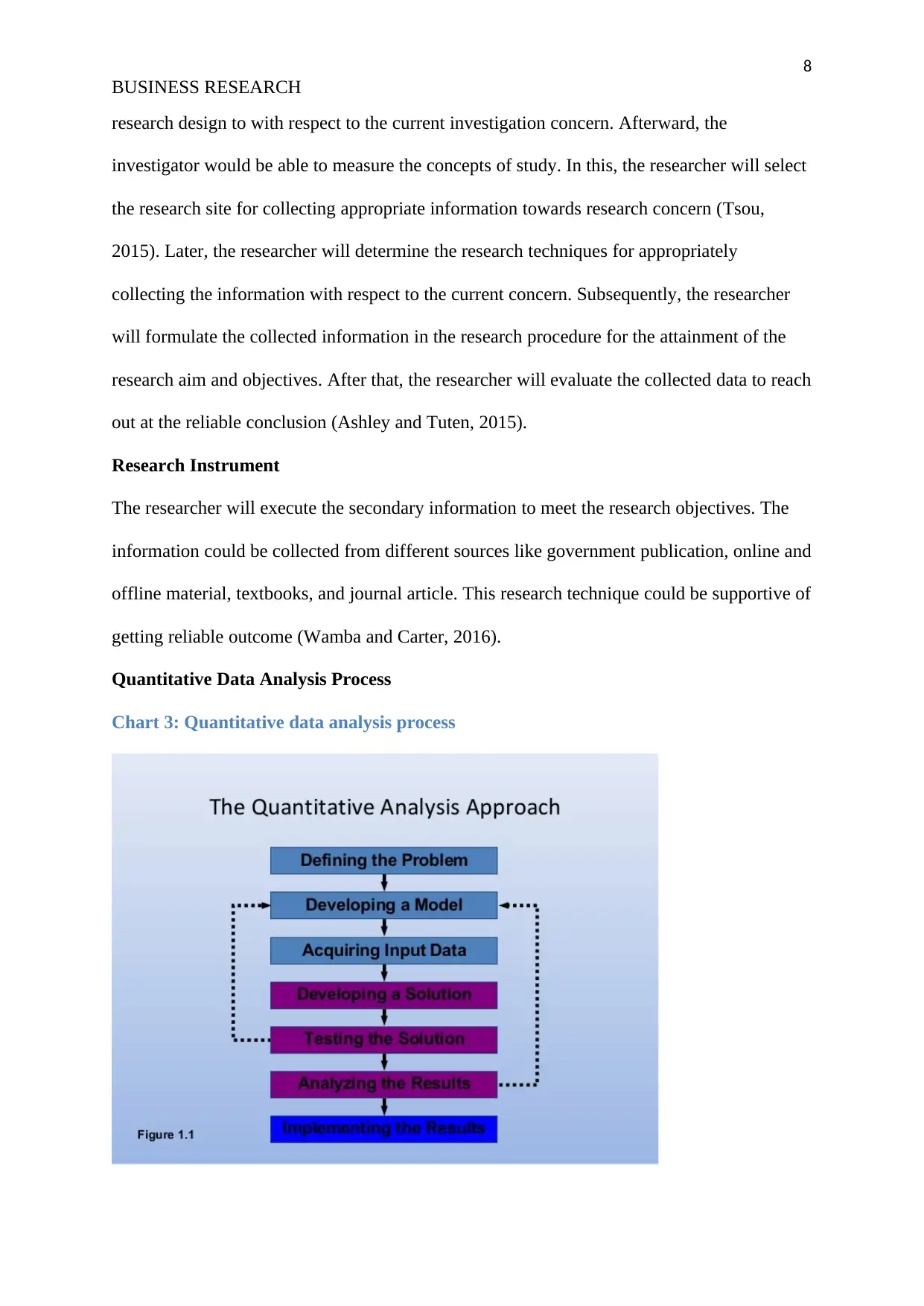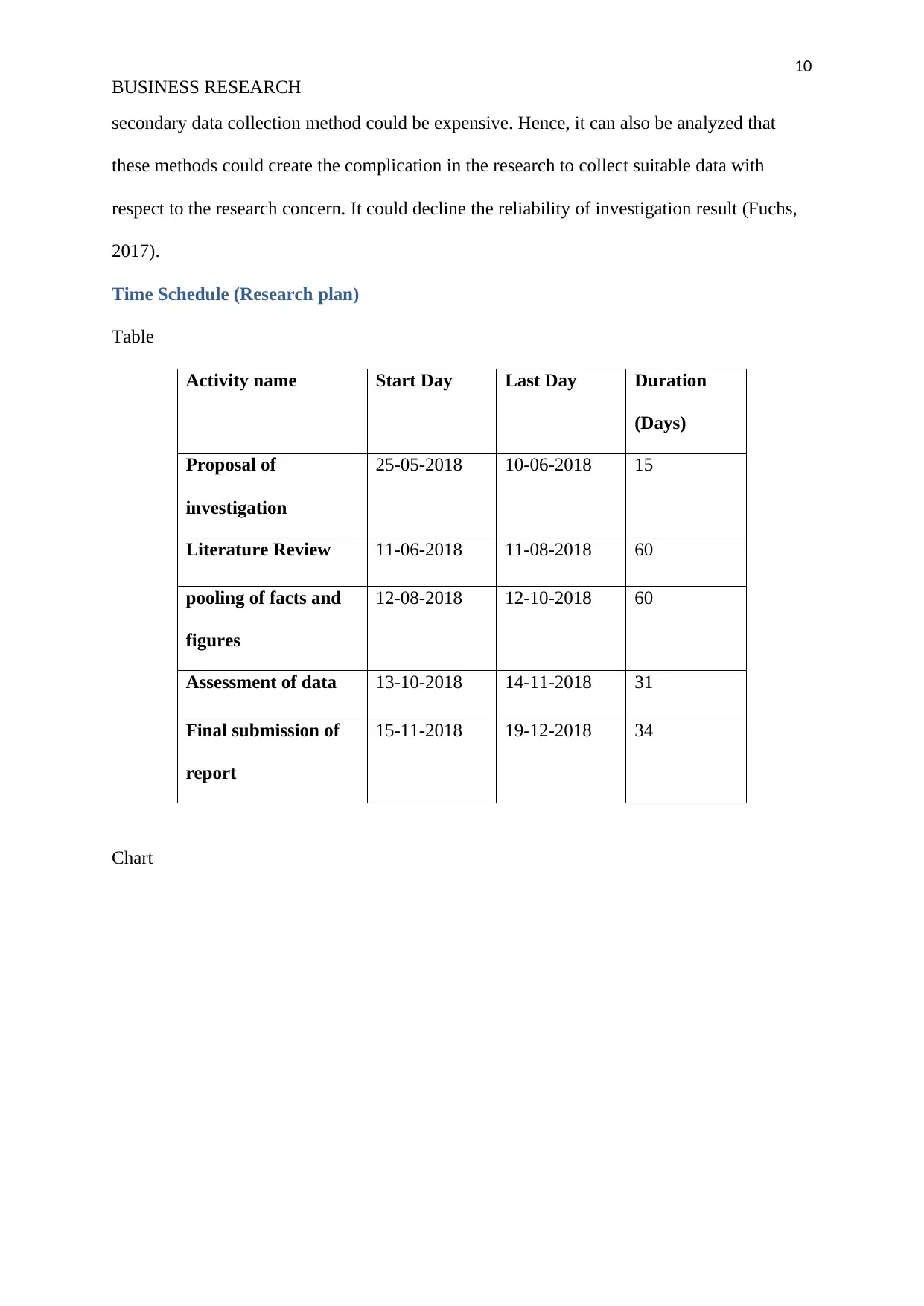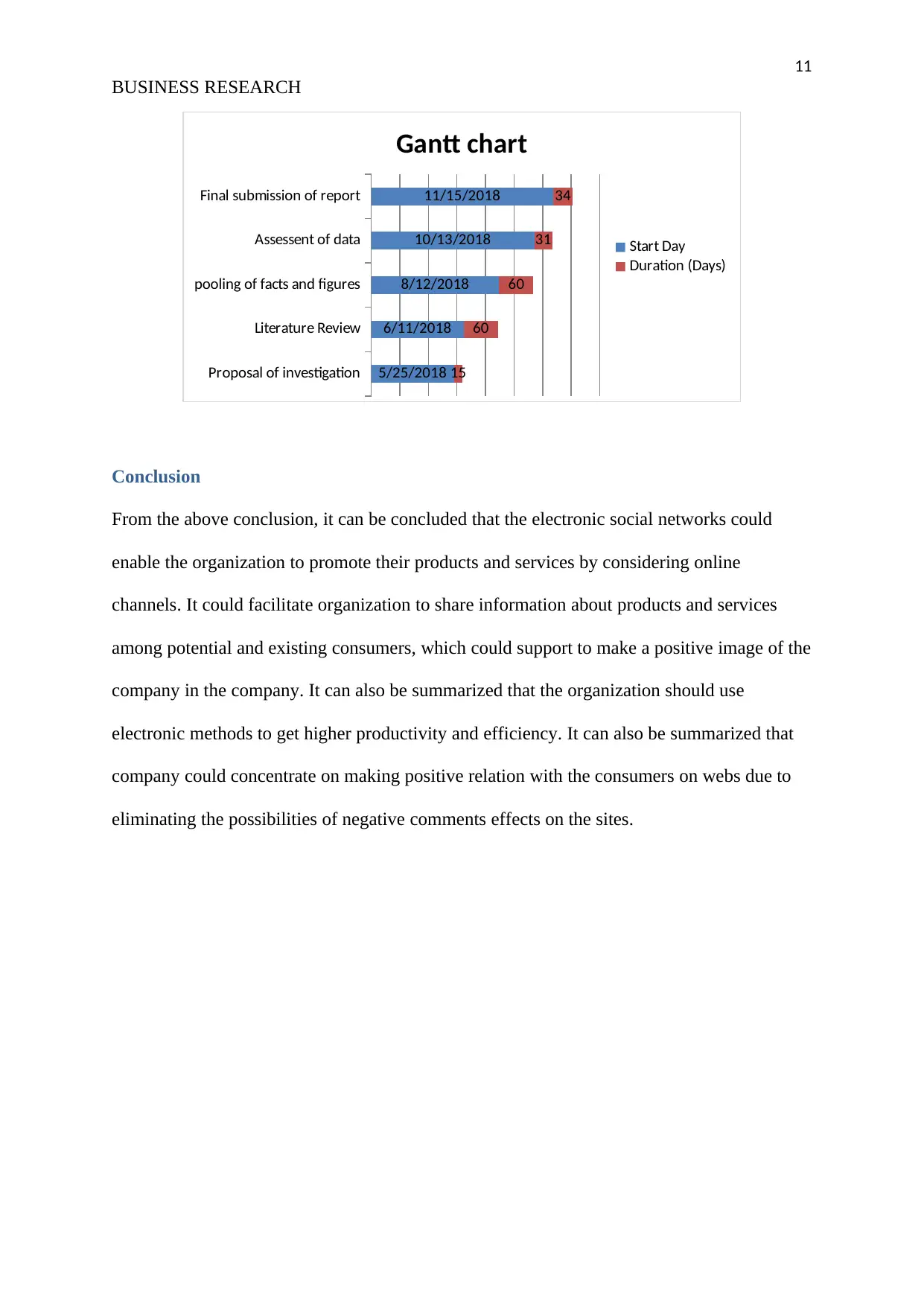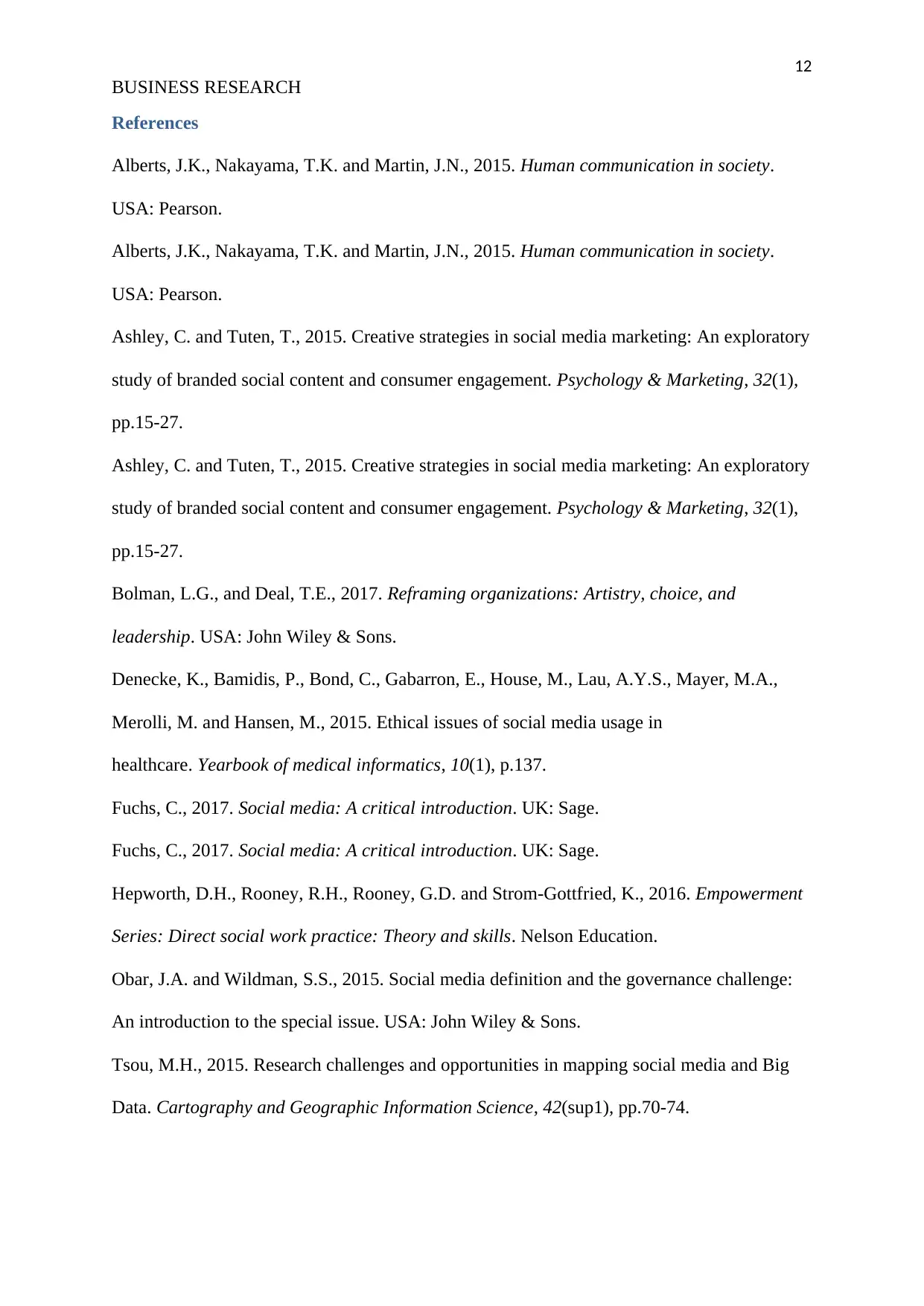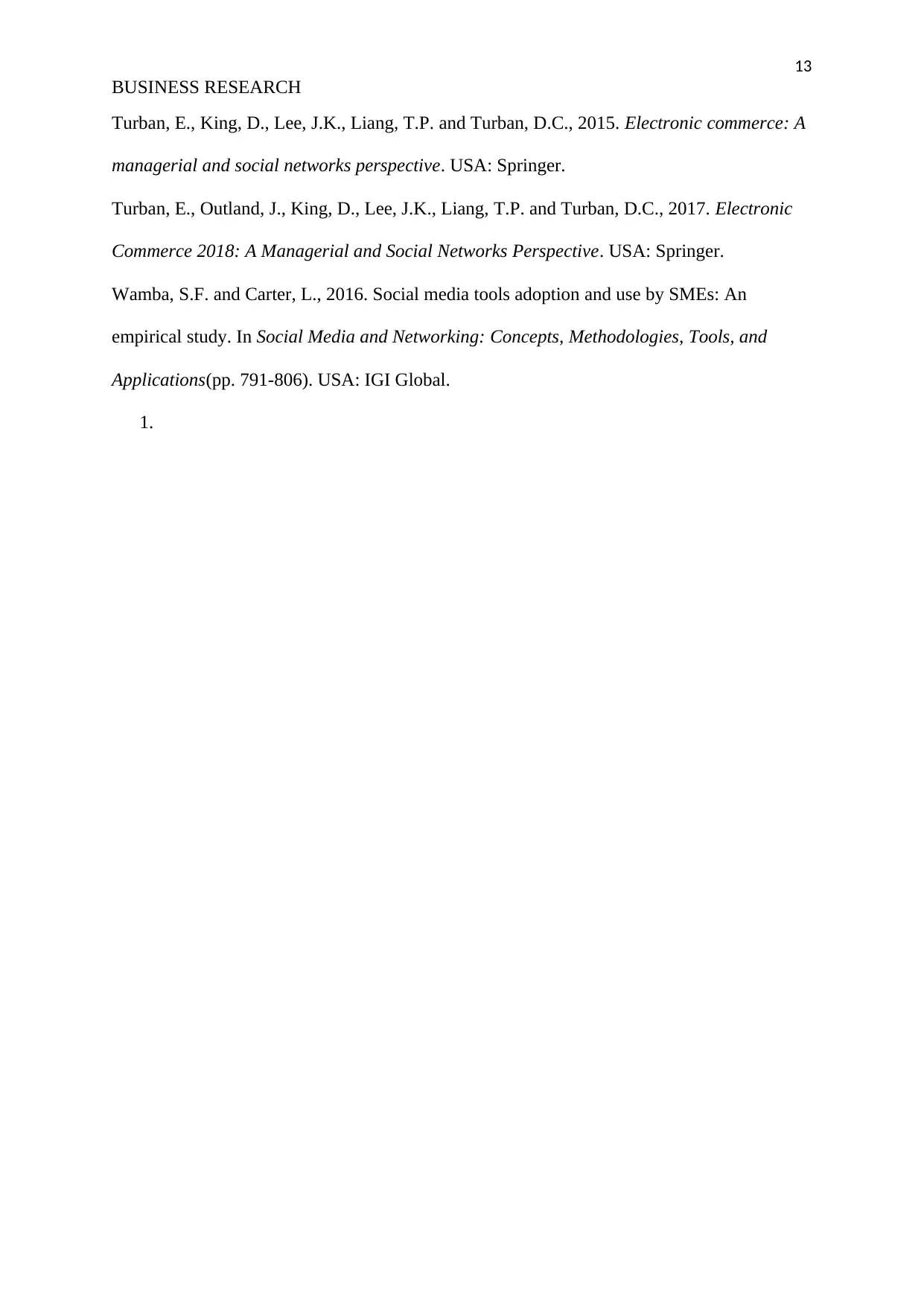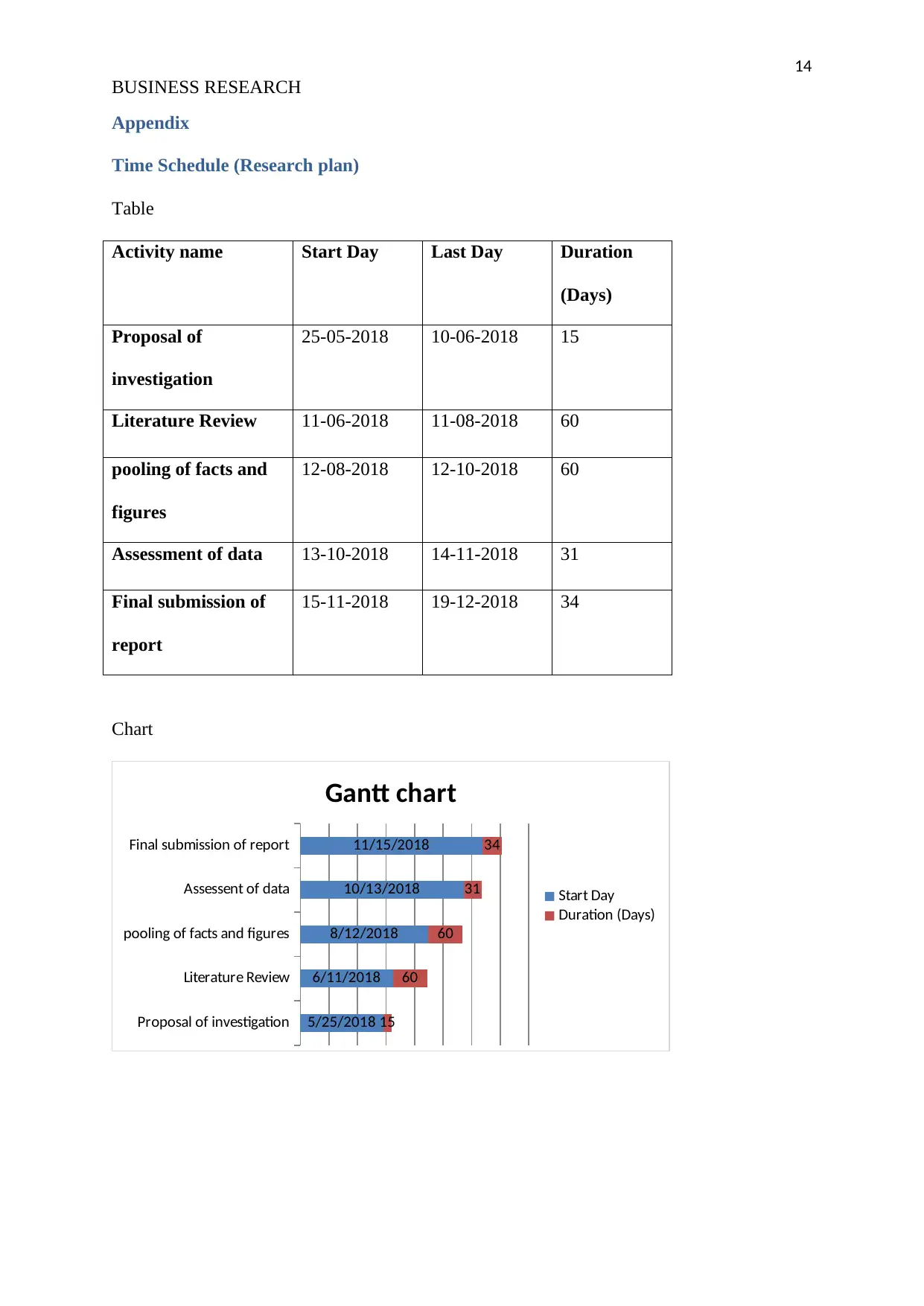Business Research Introduction 3 Project Scope 4 Literature Gap 5 Research Design and Methodology 5 Research Design and Methodology 5 Research Design and Methodology 5 Research Design and Methodology
VerifiedAI Summary
Running Head: BUSINESS RESEARCH about 7 BUSINESS RESEARCH Business research Introduction 3 Project Scope 3 Summary of Literature Review 4 Literature gap 5 Justification of research problem 5 Research Questions/Hypothesis 5 Research Design and Methodology 5 Qualitative research 5 Quantitative research 7 Time Schedule (Research plan) 10 Conclusion 11 References 12 Appendix 14 Time Schedule (Research plan) 14 Introduction SEC (social electronic commerce) could be a bundle of the e-commerce by which sites of e-commerce could facilitate the organization to practice the online
![[object Object]](/_next/static/media/star-bottom.7253800d.svg)
![[object Object]](/_next/static/media/star-bottom.7253800d.svg)
